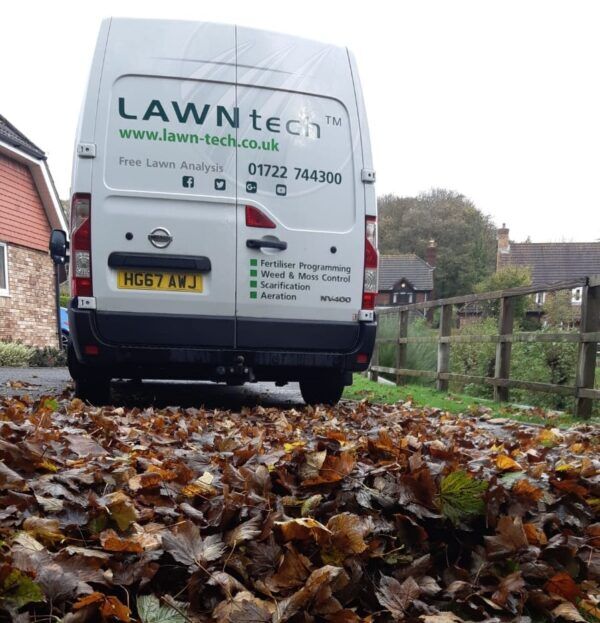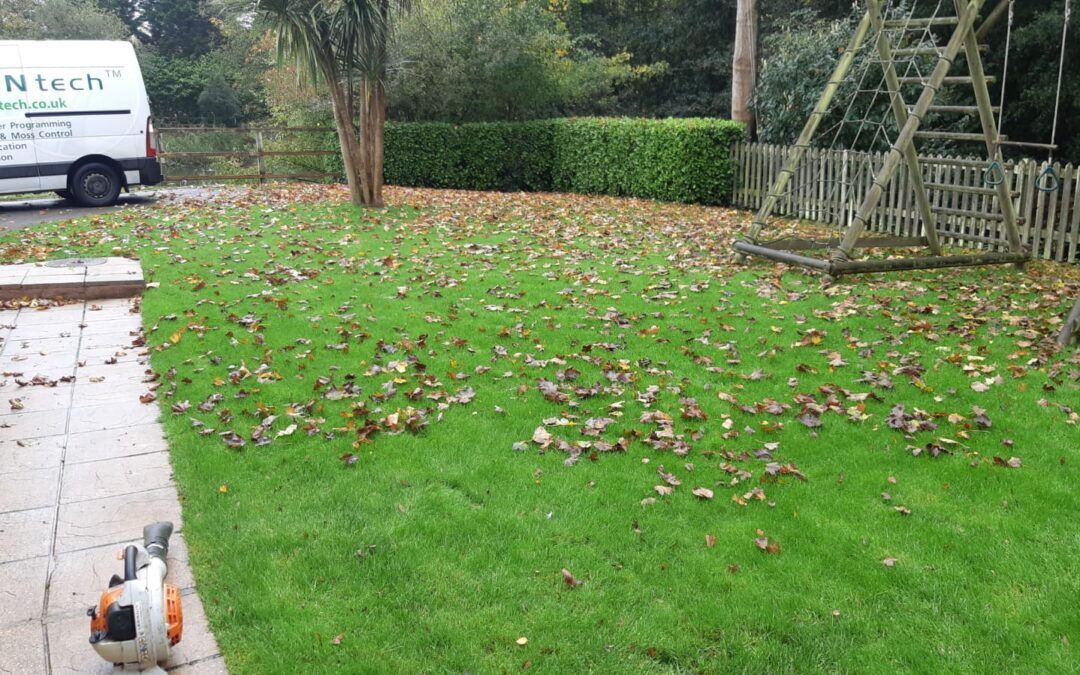It’s time to break out the leaf rake or blower!
With the clocks going back and the last hope of an Indian Summer fading away, many gardeners turn their backs on the garden and hibernate for the winter. 2020 has brought unique challenges as we all know, but huge numbers of people have welcomed the opportunity of spending more time in the fresh air. Now is a great time to make the most of this while helping your lawn prepare for the winter ahead.

Lawntech van in a leafy suburb near you
From your lawn’s point of view, the most helpful thing you can do throughout the autumn is to keep it clear of leaves. With high winds blowing never-ending fresh supplies of leaves onto your lawn It can feel pretty soul-destroying, but you’ll be doing your bit to keep it healthy. By keeping those leaves away, you’ll be allowing the vital supplies of light and air to get to where it’s needed most – into the grass plants which make up your lawn. If you’ve invested in having your lawn scarified, aerated and over-seeded this year, you surely won’t want to compromise that commitment by allowing the dead leaves to choke the life out of the lawn. It is surprising how quickly a healthy-looking lawn can be made to look poorly, patchy and pathetic by a layer of decaying foliage, so please do your bit by raking or blowing those leaves away as often as you can.

That lawn looks leafy!
Don’t forget, the leaves you remove can be stowed away and put to use as Soil Improver or Compost at a later date. Leaf Mould is an excellent Soil Improver and can even be used as seed-sowing compost. While it can take 2 years to break down entirely, it is still very useful before it gets to that stage. It can be used for mulching, lawn top-dressing in autumn and as winter covering for bare soil.

The pure joy of leaf mould!
Making Leaf Mould is very simple; Once collected, load your leaves into a black plastic bin liner and if they’re dry, add some water. Tie the bag loosely and pierce some holes in it to allow air flow. Stack the bags in a sheltered spot.
Alternatively, you can build a Leaf Mould bin in much the same way as a conventional 1-metre high Compost Bin, although the sides need only consist of chicken wire. Periodically turn the leaf heap over with a fork, to assist the decomposition process. Over time, either of these methods will end up giving you a rich source of versatile organic matter, at zero cost. There’s a happy thought to finish on, as you’re raking or blowing those leaves away!



